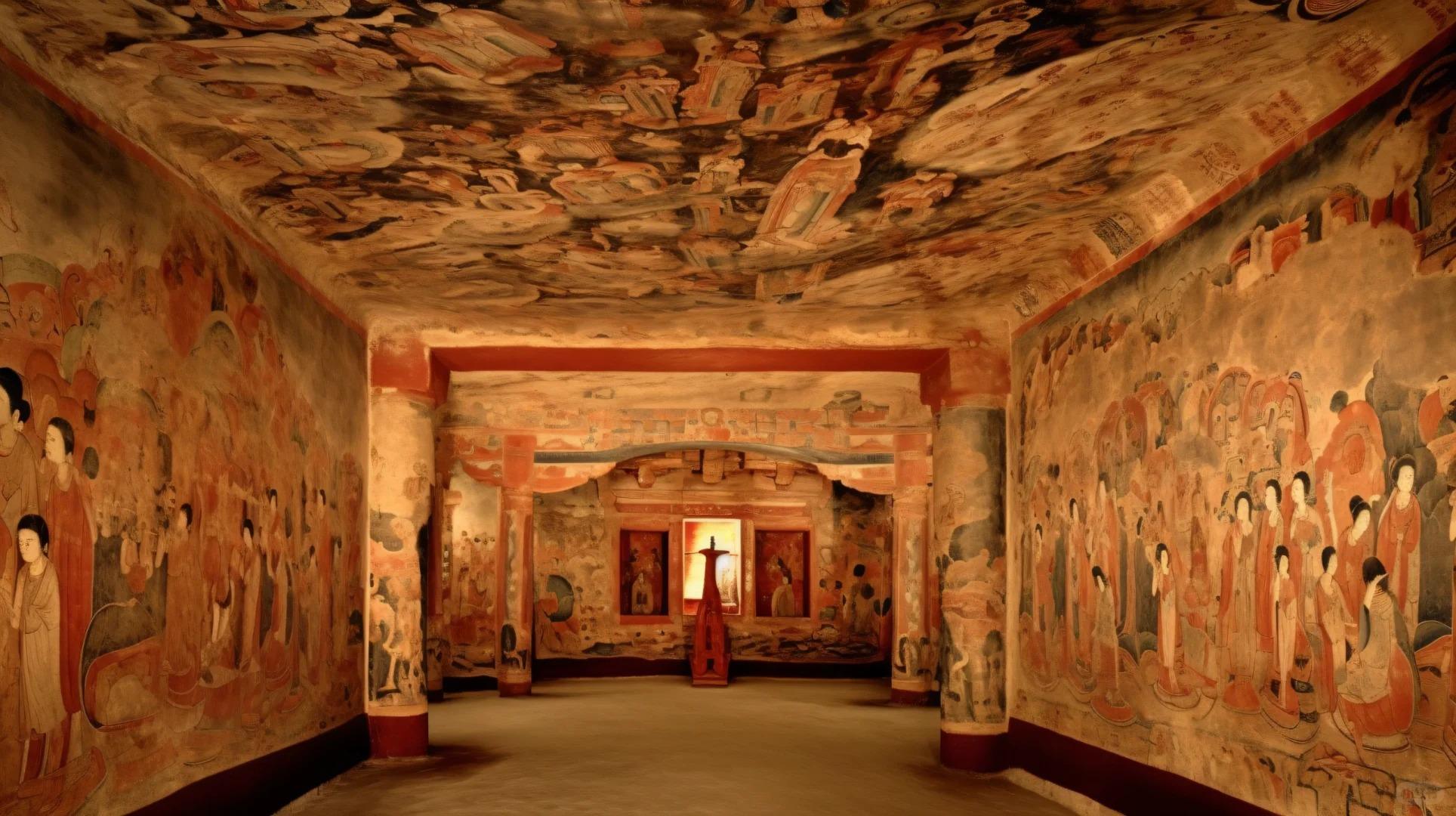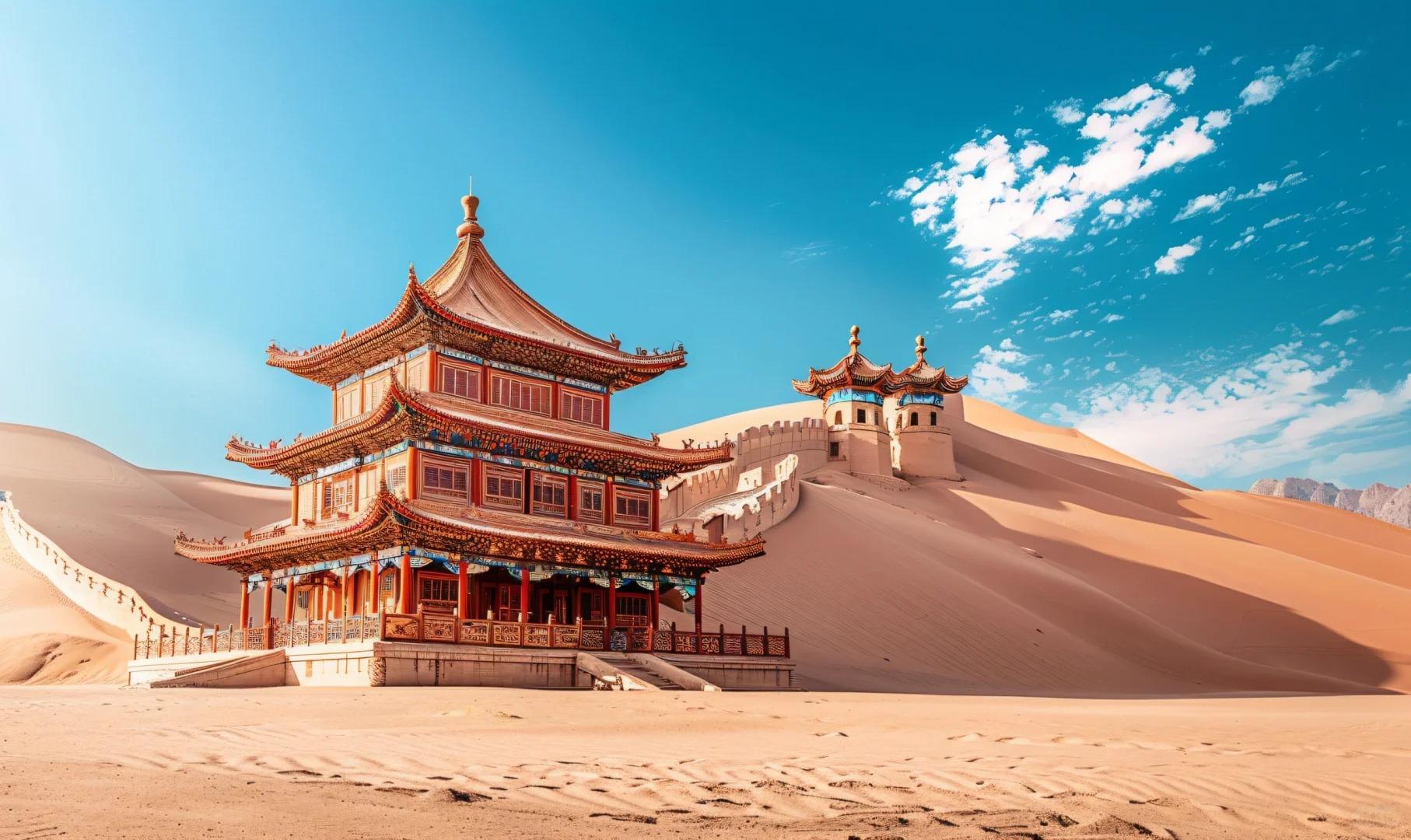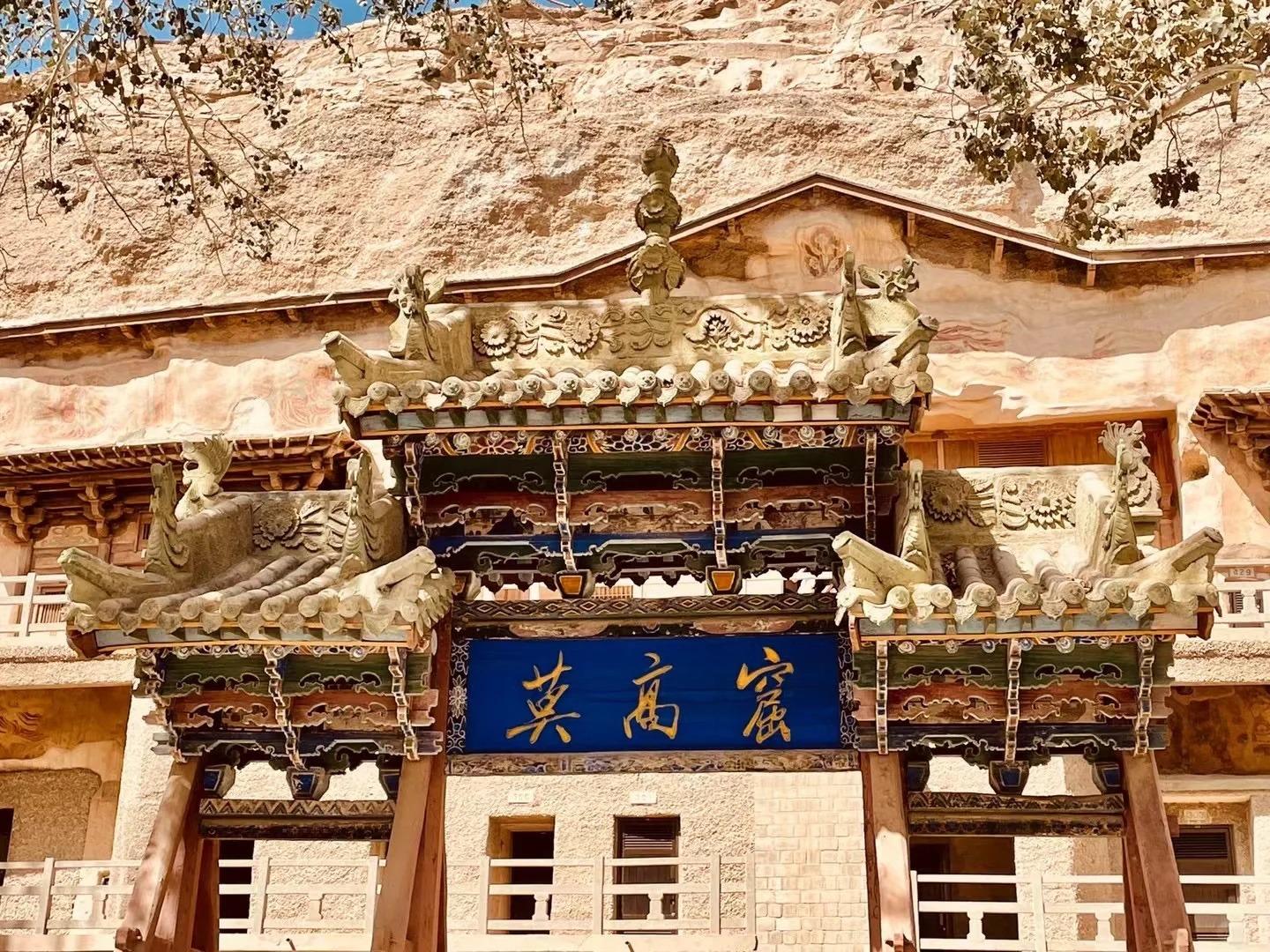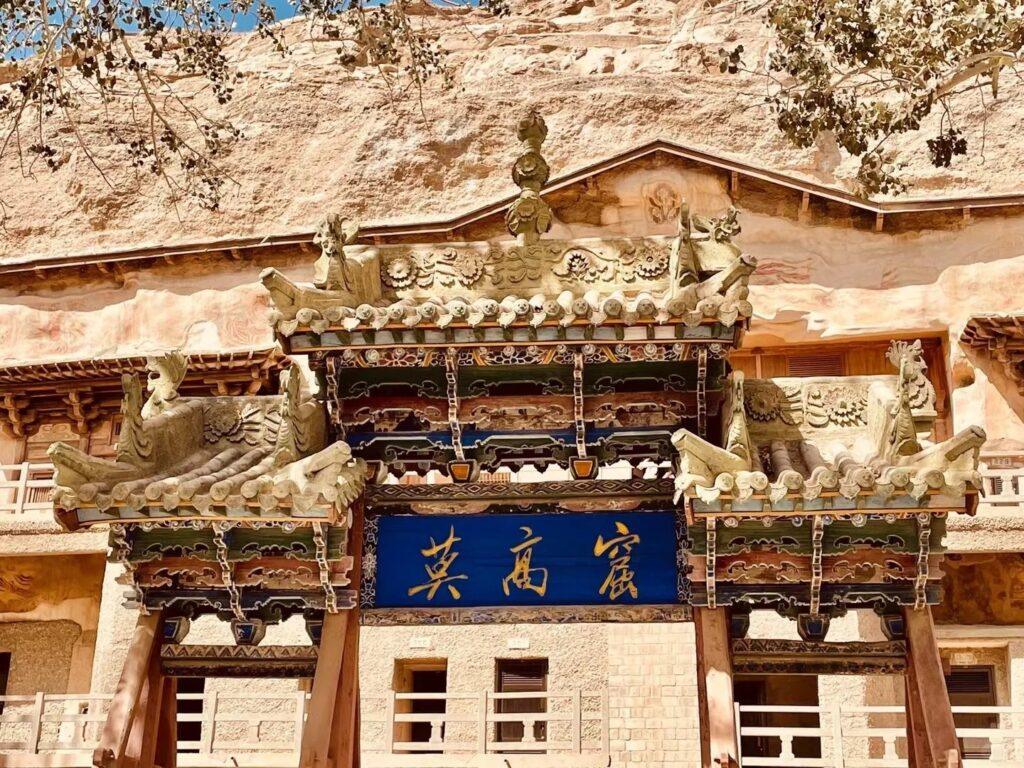Visiting Information
| Information | Details |
|---|---|
| Chinese Name | 莫高窟 (Mògāo kū) |
| Location and Address | Dunhuang, Jiuquan, Gansu Province, China |
| Opening Time/Hours | 8:00 AM – 6:00 PM (May to October) 9:00 AM – 5:30 PM (November to April) |
| Entrance Fee | 238 CNY (May to October) 120 CNY (November to April) |
| How to Get There | By Bus: Take Tourist Bus 3 from Dunhuang City By Taxi: About 30 minutes from Dunhuang City No metro available in Dunhuang |
| Best Time for Visit | May to October (peak season with best weather) |
| Contact Info | Phone: +86 937 8869111 Email: [email protected] |
Overview
The Mogao Grottoes, also known as the Thousand Buddha Caves, is a system of 492 temples carved into cliffs near Dunhuang, in Gansu province, China. It is one of the most significant and best-preserved repositories of Buddhist art in the world, spanning a period of 1,000 years from the 4th to the 14th centuries. The site is renowned for its statues and wall paintings, spanning 45,000 square meters (480,000 square feet). The Mogao Grottoes were designated a UNESCO World Heritage Site in 1987.
Historical Background
The creation of the Mogao Grottoes began in 366 CE when a Buddhist monk, Lè Zūn, had a vision of a thousand Buddhas bathed in golden light at the site, inspiring him to carve a cave here. Over the subsequent millennium, hundreds of caves were carved and decorated by monks, local rulers, and pilgrims. The grottoes flourished as an important center on the Silk Road, facilitating cultural exchange between East and West. However, by the 14th century, the site was largely abandoned as trade routes shifted. The caves were rediscovered in the early 20th century by Taoist priest Wang Yuanlu, leading to international interest and subsequent archaeological expeditions. Today, the Mogao Grottoes stand as a testament to the religious, artistic, and cultural history of China and Central Asia.

Architectural Features
- Cave Structure: The Mogao Grottoes consist of 492 caves carved into a cliff face. These caves vary in size, from small cells to large halls, some reaching heights of up to 40 meters. The caves are typically rectangular in shape, with a front chamber, a main chamber, and sometimes side chambers. The layout often reflects the architectural style of Chinese Buddhist temples, with features like domed ceilings and central pillars.
- Wall Paintings: One of the most striking features of the Mogao Grottoes is the extensive murals covering the walls and ceilings of the caves. These paintings, covering an area of approximately 45,000 square meters, depict Buddhist stories, scenes from daily life, and landscapes. The artists used various techniques, including fresco and dry painting, and a wide range of pigments to create these vivid and detailed artworks.
- Sculptures: The grottoes house over 2,000 colored clay sculptures of Buddha and other religious figures. These statues range in size from tiny figurines to colossal representations, with the largest Buddha statue reaching 35.5 meters in height. The sculptures showcase various artistic styles, reflecting the changing influences and techniques over the centuries.
- Wooden Structures: While most of the original wooden structures have not survived, some caves still retain wooden architectural elements. These include facade structures, eaves, and internal supports. The Nine-Story Temple, a wooden pagoda built against the cliff face, is a prominent example of the wooden architecture associated with the grottoes.
Cultural Importance
The Mogao Grottoes hold immense cultural importance as a treasure trove of Buddhist art and a testament to cultural exchange along the Silk Road. The site provides invaluable insights into the evolution of Buddhist art in China over a millennium, reflecting various artistic styles and religious influences. The murals and sculptures not only depict Buddhist themes but also offer a window into the daily life, customs, and historical events of different periods. The discovery of the Library Cave in 1900, containing over 50,000 manuscripts, significantly contributed to the understanding of Central Asian and Chinese history. These documents, in various languages, highlight the multicultural nature of the Silk Road. The Mogao Grottoes exemplify the blending of Chinese, Indian, and Central Asian artistic traditions, making them a unique repository of cultural fusion. Today, they continue to be a source of inspiration for artists and a subject of study for scholars worldwide, playing a crucial role in the preservation and understanding of Buddhist art and Silk Road history.
Surrounding Attractions
- Crescent Lake and Mingsha Shan: Located about 6 km southwest of Dunhuang, Crescent Lake (Yueyaquan) is a crescent-shaped oasis surrounded by the towering sand dunes of Mingsha Shan (Echoing Sand Mountain). This natural wonder has existed for over 2,000 years, defying the encroaching desert. Visitors can enjoy activities such as camel riding, sand sledding, and watching the sunset over the dunes. The contrast between the lush oasis and the vast desert creates a surreal landscape that’s popular among photographers and nature enthusiasts.
- Yumen Pass: Also known as the Jade Gate Pass, Yumen Pass is located about 90 km northwest of Dunhuang. It was a strategic point on the ancient Silk Road, controlling access to the Hexi Corridor. The pass consists of the ruins of a Han Dynasty (202 BC – 220 AD) fortress and sections of the Great Wall. Visitors can explore the remaining structures and imagine the bustling trade caravans that once passed through this remote desert outpost. The stark beauty of the surrounding Gobi Desert adds to the atmospheric experience of this historical site.
- White Horse Pagoda: Situated about 2 km west of Dunhuang, the White Horse Pagoda is a Buddhist structure dating back to the Tang Dynasty (618-907 AD). According to legend, it was built to commemorate a white horse that died after carrying Buddhist scriptures from India to China. The pagoda stands 12 meters high and is surrounded by a small temple complex. Its unique architectural style and historical significance make it an interesting stop for those interested in Buddhist history and Chinese architecture.
- Dunhuang Museum: Located in Dunhuang city, this museum offers an excellent introduction to the history and culture of the Dunhuang area. It houses over 4,000 cultural relics, including artifacts from the Mogao Grottoes, ancient documents, and everyday items from various historical periods. The museum’s exhibits cover topics such as the Silk Road, Buddhist art, and the development of Dunhuang as a cultural crossroads. For visitors to the Mogao Grottoes, the museum provides valuable context and background information, enhancing the overall understanding of the region’s rich heritage.

Photography Opportunities
- Exterior Landscape: The exterior of the Mogao Grottoes offers stunning opportunities for landscape photography. The honey-combed facade of the grottoes carved into the sandstone cliffs creates a dramatic backdrop, especially during the golden hours of sunrise and sunset. The contrast between the rugged cliff face and the surrounding desert landscape provides a sense of the site’s isolation and historical significance. Photographers can capture wide-angle shots to showcase the scale of the grottoes or focus on the intricate details of the cave openings and remaining wooden structures.
- Interior Murals: While photography inside the caves is generally restricted to protect the ancient artworks, some caves allow non-flash photography with special permission. When permitted, photographing the intricate murals requires skill in low-light conditions. The vivid colors and detailed depictions of Buddhist stories, historical scenes, and patterns offer endless subjects for close-up and detail shots. Capturing the overall composition of the murals within the cave space can convey the immersive experience of being surrounded by centuries-old art.
- Sculptures and Statues: The numerous Buddha statues and other sculptural works in the caves present unique photographic subjects. From massive seated Buddhas to intricate bodhisattva figures, these sculptures offer opportunities for both grand and detailed shots. Photographers can focus on capturing the expressions, hand gestures (mudras), and ornate decorations of these statues. The interplay of light and shadow on the sculptures can create dramatic effects, highlighting their three-dimensional forms.
- Digital Exhibition Center: The modern Digital Exhibition Center at the Mogao Grottoes site provides excellent photography opportunities without the restrictions of the actual caves. High-resolution reproductions of cave interiors and artworks allow photographers to capture detailed images of the murals and sculptures. The center’s use of advanced projection technology creates immersive environments that can be photographed to give viewers a sense of the grottoes’ scale and beauty.
Modern Importance
- Cultural Heritage Preservation: The Mogao Grottoes serve as a prime example of cultural heritage preservation in China and globally. The site faces ongoing challenges from environmental factors and tourism pressure, leading to the development of innovative conservation techniques. These efforts include climate control systems, digital documentation, and visitor management strategies. The preservation work at Mogao has become a model for other heritage sites, contributing to the advancement of conservation science and practices worldwide.
- Digital Archiving and Virtual Access: In recent years, the Mogao Grottoes have been at the forefront of digital preservation and virtual access initiatives. High-resolution scanning and 3D modeling of the caves and artworks have created detailed digital archives, ensuring that this cultural heritage is preserved for future generations. These digital resources also enable virtual tours and online exhibitions, allowing people from around the world to experience the grottoes without physical visitation, thus reducing the environmental impact on the site while promoting global cultural understanding.
- International Collaboration and Research: The Mogao Grottoes continue to be a significant site for international scholarly collaboration and research. Experts from various fields, including art history, archaeology, conservation science, and religious studies, conduct ongoing research at the site. This interdisciplinary approach has led to new discoveries about the history of the Silk Road, Buddhist art development, and ancient technologies. The grottoes serve as a crucial resource for understanding cultural exchange between East and West in historical contexts.
- Sustainable Tourism Model: The management of tourism at the Mogao Grottoes has become a model for sustainable tourism at sensitive cultural sites. With the implementation of strict visitor quotas, guided tours, and the development of the Digital Exhibition Center, the site demonstrates how to balance preservation needs with public access and education. This approach not only protects the grottoes but also enhances the visitor experience through detailed explanations and immersive technologies. The strategies developed here are being studied and adapted by other World Heritage Sites facing similar challenges of balancing conservation with tourism.

FAQ
- What are the Mogao Grottoes famous for?
The Mogao Grottoes are famous for their extensive collection of Buddhist art, including murals, sculptures, and manuscripts. They are renowned for their historical and artistic significance, showcasing the evolution of Buddhist art over a millennium and the cultural exchange along the Silk Road. - What’s inside the Mogao Grottoes?
Inside the Mogao Grottoes, you’ll find:
1. Colorful murals covering walls and ceilings
2. Buddhist sculptures and statues
3. Architectural features like domed ceilings and central pillars
4. Ancient manuscripts (in the Library Cave, though not accessible to regular visitors)
5. A blend of Chinese, Indian, and Central Asian artistic styles - Are the Mogao Grottoes free?
No, the Mogao Grottoes are not free to visit. There is an entrance fee that varies depending on the season: 238 CNY from May to October, and 120 CNY from November to April. - Are the Mogao Grottoes worth visiting?
Yes, the Mogao Grottoes are definitely worth visiting. They offer a unique glimpse into Buddhist art history, ancient Chinese culture, and Silk Road heritage. The site’s historical significance, artistic beauty, and scale make it a must-see attraction for those interested in art, history, or culture. - What to do in the Mogao Grottoes?
At the Mogao Grottoes, you can:
1. Take a guided tour of selected caves
2. Visit the Digital Exhibition Center for high-tech displays of the artworks
3. Explore the Mogao Grottoes Museum to learn about the site’s history
4. Admire the exterior architecture and surrounding landscape
5. Participate in educational programs about Buddhist art and Silk Road history
6. Visit the gift shop for replicas and books about the grottoes - How do I get to the Mogao Grottoes in the local city?
To get to the Mogao Grottoes from Dunhuang city:
1. Take Tourist Bus 3 from the Dunhuang Bus Station directly to the grottoes
2. Take a taxi, which is about a 30-minute ride from the city center
3. Join a organized tour that includes transportation
Note: There is no metro system in Dunhuang. - How to visit the Mogao Grottoes?
To visit the Mogao Grottoes:
1. Book your tickets in advance, especially during peak season (May to October)
2. Arrive at the visitor center at your designated time
3. Start with the Digital Exhibition Center for an overview
4. Join a guided tour to visit selected caves (tours are mandatory and in Chinese or English)
5. Respect photography restrictions inside the caves
6. Wear comfortable shoes for walking and climbing stairs
7. Bring water and sun protection, as the area can be hot and dry
8. Allow at least half a day for your visit to fully appreciate the site




